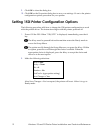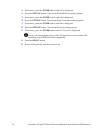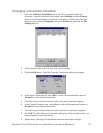
Windows 95 and 98 Printer Driver Installation and Technical Reference 17
Printer Fonts
The printer driver for Windows 95 and 98 uses two types of fonts: text and pseudo.
Refer to the tables on the pages that follow for specific fonts that are available.
text fonts
Text fonts are the “flat” fonts printed on a card. They are available on the 280
with graphics and the 285. Text fonts come in two varieties: TrueType and
Printer.
· The Windows operating system provides TrueType fonts, which are similar
to graphics. The 280 with graphics and the 285 printers can use all the
TrueType fonts. When you display a list of fonts in your Windows
application, a T
T
icon precedes all TrueType fonts.
· The printers provide Printer fonts. The fonts are similar, and in some cases
nearly identical, to the TrueType fonts. The purpose of providing printer-
resident fonts is to improve printing speed, although systems with very fast
computers may be able to print cards using TrueType fonts as fast or faster
than cards using printer fonts. When you display a list of fonts in your
Windows application, a printer icon precedes all printer fonts. When using
printer fonts, the screen image may not match the printed output.
pseudo fonts
Pseudo fonts enable embossing, indent, and magnetic stripe encoding
capabilities. Most Windows applications do not have a built-in method for
embossing or encoding; however, font selection capabilities are usually
available. The printer drivers for Windows 95 and 98 use font selection as a
method for identifying an encoding format (track 1-IATA, track 2-ABA, track 3-
TTS) or an embossing style.
Font selections must match the printer settings and hardware configuration.


















